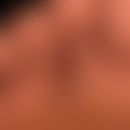Synonym(s)
BMS
DefinitionThis section has been translated automatically.
Invented by Prof. Dr. Vladimir T Nasarov, sports scientist and biomechanist, chair of sports mechanics at the Minsk State University.
Physical therapy method in which vibrations of different frequencies are applied to the skin. Depending on the indication, a more blood circulation-promoting, loosening or muscle-building effect can be achieved.
Biomechanical stimulation is used in medicine, e.g. scleroderma, in sports and in cosmetics.
General informationThis section has been translated automatically.
- Vibrations are applied by a vibrator along the muscle fibre (in the direction of contraction) and cause intensive stimulation of the mechanoreceptors.
- The frequency of the vibrators is 18-30 Hz in the range of the so-called physiological tremor, a natural natural oscillation of the muscle fibre, which increases under tension. In the lower frequency range (20 Hz) the blood circulation is stimulated, in the higher (30 Hz) the muscle build-up. The vibration amplitude is 4-6 mm.
- By changing the frequency and amplitude of the stimulation, various treatment goals can be achieved. In the lower range, the muscle pump is mainly activated, in the higher range, the mechanoreceptors are stimulated.
You might also be interested in
EffectsThis section has been translated automatically.
- The BMS uses the physiological muscle pump to achieve an improvement in muscle blood flow and blood transport functions through a sequence of longitudinal contractions of the muscle spindles. This results in improved nutrition of the muscle and muscle growth.
- Stretching and relaxation of the muscle fibres by BMS, as well as action on mechanoreceptors arranged in the direction of the fibres, which are also responsible for information about the position of the body in three-dimensional space, cause excitation to be generated and transmitted to the central nervous system, which in turn reacts with signals to activate motor and sensory body functions. Improvements in synergistic muscle functions, coordination and controllability of the various muscle groups as well as synchronization of the muscle fibers or syncytia in the individual muscle are thus achieved.
- Improvement of the blood circulation up to hyperaemia
- Improvement of joint mobility - extensibility, gliding behaviour of the tissue layers
- Influencing the mechanoreceptors causes an optimization of the cooperation of peripheral and central nerves
- Pain relief by promoting intra- and extracellular fluid exchange
- Metabolic activation
IndicationThis section has been translated automatically.
- Including systemic scleroderma, circumstrictive scleroderma, primary fibromyalgia syndrome.
- Treatments after stroke and paralysis, muscle tension, muscle weakness, muscle wasting, multiple sclerosis.
- Rheumatic diseases (e.g. Bechterew's disease, Truffle-Marie disease).
- Orthopaedic diseases: shoulder, back and hip complaints, neck headaches, damage to the intervertebral disc, slipped disc, pain in the musculoskeletal system.
- Metabolic and arterial circulatory disorders and chronic venous insufficiencies, lymphangiopathy, neuropathies, migraines.
- ENT: tinnitus, facial paresis
- Aesthetics: wrinkle reduction, collagen formation, tissue tightening, scar treatment
Note(s)This section has been translated automatically.
Devices (vibrator):
- For whole-body therapy: e.g. BMS device "GRIZZLY" from SZK (Senn, Zygelmann, Kneiss Gmbh).
- For local, manual BMS treatment of larger muscle groups and joints: E.g. BMS DEVICE "UNOST" SFT of the company SZK, model Dynamic 1 and 2, model Hardhand, Corina WS, Ines of the company M.U.E.T.Ines Gropper
- For facial treatment and for therapy of small muscle groups and joints: e.g. UNOST SF of the company SZK, model Corina Visage of the company M.U.E.T.Ines Gropper
- Strict monitoring of therapy times to avoid overloading
LiteratureThis section has been translated automatically.
- Disciple M (1998) Physical therapy of venous diseases. Vasa 27: 73-79
- Klyscz T (1997) Biomechanical stimulation therapy as physical treatment of arthrogenic venous insufficiency. dermatologist 48: 318-322
- Klyscz T (1999) Biomechanical stimulation therapy. A novel physiotherapy method for systemic sclerosis. Adv Exp Med Biol 455: 309-316
- Nazarov V et al (1987) Development of athlete's strength abilities by means of biomechanical stimulation method. Theory Pract Phys culture (Moscow) 12: 37-39
- Pedersen J et al (2003) Pain and biomechanical responses to distention of the duodenum in patients with systemic sclerosis. Gastroenterology 124: 1230-123




